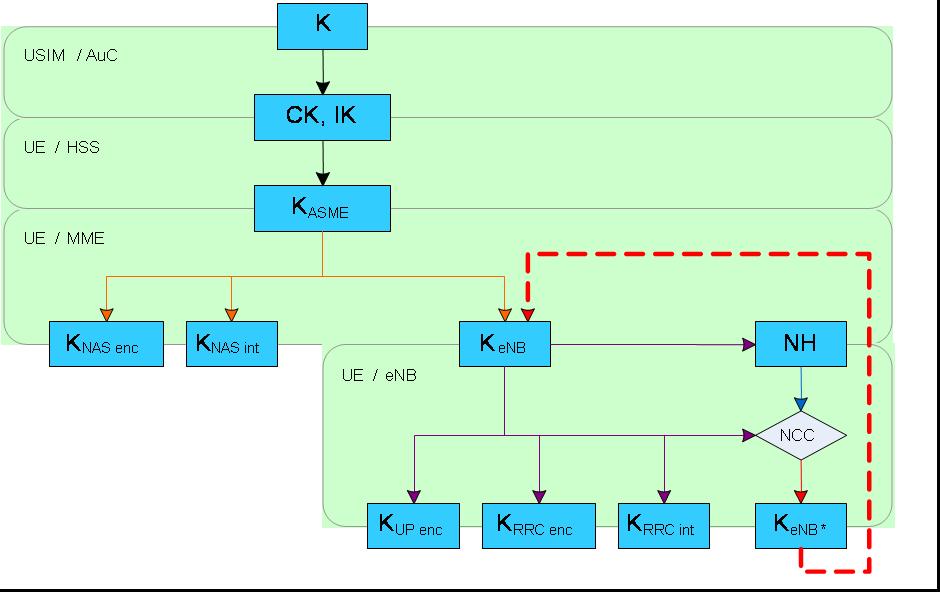| Home | Products | Partners | FAQ | Library | Links | Company |
|
Our Articles 
Simple and powerfull GSM + LTE Authentication Calculator: TUAK, Milenage, COMP128-1, 2, 3, Xor Visualyze and Analyze all APDUs between handset and RUIM, (U)SIM All you need to work with SIM, USIM, R-UIM card: build card tree, read, write, export GSM 03.48 compliant solutions for Over-The-Air campaign DES, 3DES, AES, MD5, and other encryptions and hashes Parse an ISO 7816-3 ATR online A collection of Java Card projects in source A simple tool to convert CAP files into IJC format 
|
LTE Security PrinciplesSource: Lte World
The figure above depicts simplified key derivation. The MME invokes the AKA procedures by requesting authentication vectors to the HE (Home environment) if no unused EPS authentication vectors have been stored. The HE sends an authentication response back to the MME that contains a fresh authentication vector, including a base-key named KASME. Thus, as a result of an AKA run, the EPC and the UE share KASME. From KASME, the NAS keys, (and indirectly) KeNB keys and NH are derived. The KASME is never transported to an entity outside of the EPC, but KeNB and NH are transported to the eNB from the EPC when the UE transitions to ECM-CONNECTED. From the KeNB, the eNB and UE can derive the UP and RRC keys.
|

